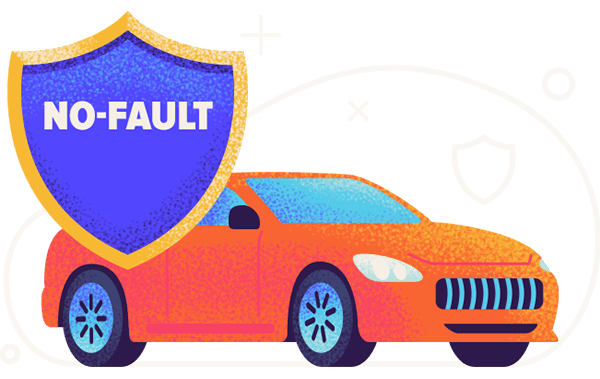AboutThe Ultimate Guide To Is Washington A No-fault Car Insurance State? - Max Meyers ...
Detractors of no-fault additionally mention that legitimate sufferers with refined handicaps find it challenging to seek healing under no-fault. One more objection is that some no-fault jurisdictions have among the highest automobile-insurance costs in the nation, yet this might be a lot more a matter of impact than cause: the monetary savings from no-fault may merely make it a lot more preferred in locations with greater automobile-collision danger, or high insurance rates might trigger much more chauffeurs to go without insurance, boosting the attraction of a no-fault system.

Fault is not called for to be revealed besides of damages in unwanted of $10,000 for bodily injury, the insurance deductible of $100 for physical injury and also residential or commercial property damages. Recoverable loss under this sort of policy does not include discomfort as well as suffering as well as is minimized by problems recuperated kind various other resources.
In 2012, RAND Corporation published a study which found that expenses were greater in no-fault systems. When it comes to financial (medical as well as wage-loss) damages, most no-fault systems allow victims to look for healing only for problems that are not covered by available first-party insurance coverage benefits. In the situation of non-economic (pain-and-suffering) problems, many no-fault systems allow victims to look for payment just in situations of extremely "severe" injury, which can be defined in either of two means: A quantitative financial limit that sets a certain dollar (or various other money) amount that must be invested in medical bills before a tort is allowed.
Fascination About Does Nevada Have No Fault Auto Insurance? - Naqvi Injury Law

A qualitative spoken limit that specifies what categories of injuries are taken into consideration completely serious to permit a tort (e. g., fatality, or long-term special needs or disfigurement). The advantage of the verbal threshold is that it eliminates any type of reward to pump up damages quantities artificially to fulfill some predetermined financial loss number.
Under such systems, understood as "choice" or "optional" no-fault, insurance holders need to pick in between "complete tort" as well as "minimal tort" (no-fault) choices at the time the plan is created or renewed; when the policy terms are established forth an insured party might not transform his/her mind without rewording the plan.
Instead, under the PIP Choice system that was established, motorists have the choice of choosing clinical protection with restrictions of $50,000 (for chauffeurs on Medicaid), $250,000, $500,000 as well as unrestricted. Motorists on Medicare might be qualified to give up all No-Fault clinical protection. The objective of the No-Fault adjustments was to lower costs for motorists and also, hence, make vehicle insurance coverage more budget-friendly.
Our Exceptions To Florida No Fault Car Insurance Laws - Deloach ... Ideas
In regards to damages to lorries as well as their materials, those claims are still based on mistake. No-fault systems concentrate entirely on problems of settlement for physical injury, Great site as well as such plans pay the clinical bills for vehicle drivers and their companions regardless of whose fault the accident was. US states and also Canadian districts with no-fault regulations [edit] Pure no-fault Qualitative limit Measurable limit Option no-fault COVID-19 injection [edit] In the USA, any severe side impacts or injuries brought on by the COVID-19 vaccination would be covered under no-fault rules by the National Vaccination Injury Payment Program and the Countermeasures Injury Payment Program, indicating it is not essential to show vaccine producers or health and wellness professionals behaved negligently to receive compensation.
If you are entailed in an automobile mishap in Texas, you might be asking yourself just how you can declare payment for your injuries. Do you have to file an insurance claim with your insurance policy business or do you have to go with the various other motorist's?
Texas is not a no-fault auto insurance state. What Is a No-Fault State? When you remain in a car crash that is not your mistake, you can assert settlement for your clinical expenses, residential or commercial property damages, lost earnings, and also other losses. Nonetheless, which insurance provider pays for these problems varies from state to state.
Top Guidelines Of How Auto Insurance Works In A No-fault State - Credit Karma
Twelve states adhere to a no-fault automobile insurance policy system when it comes to who pays for these damages. Under a no-fault system, a chauffeur has to go with his/her own insurance provider to receive payment for his/her injuries in an auto accident, despite who was at fault for the incident.
https://www.youtube.com/embed/h2Fh6f0YXxw
If the driver's insurance coverage is not adequate to cover the extent of the damage in these states, she or he can sue with the other driver's insurance policy firm or an injury legal action. Texas's Mistake Insurance Claims System Texas is not one of the no-fault states. Texas adheres to the traditional fault-based system, which places the responsibility for spending for problems endured in an automobile crash with the at-fault chauffeur's insurer.
